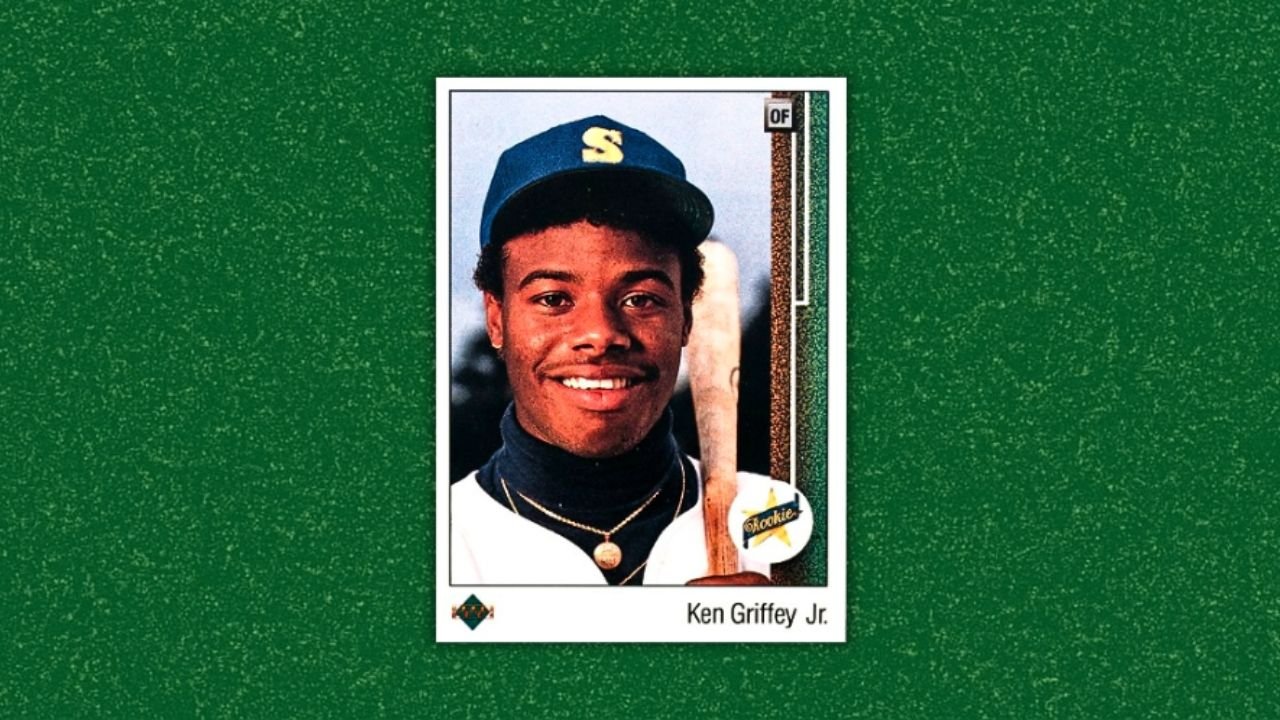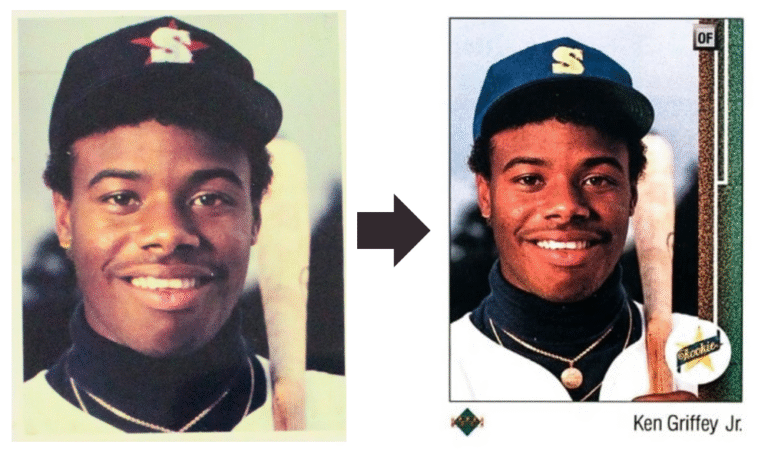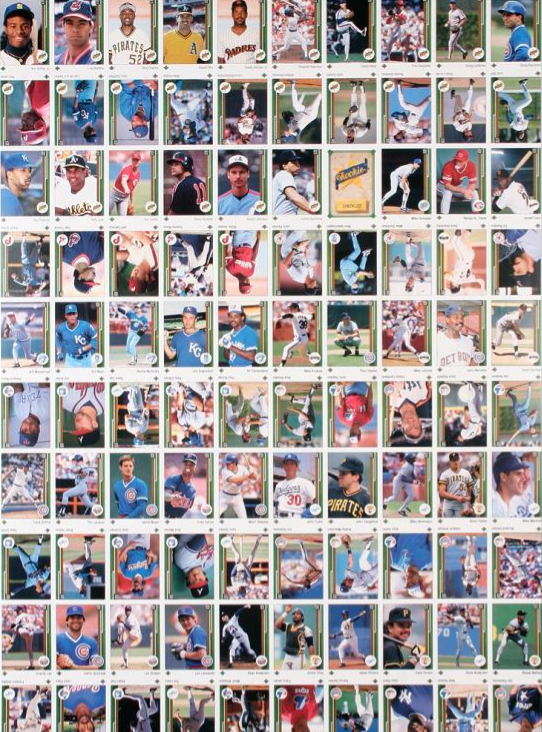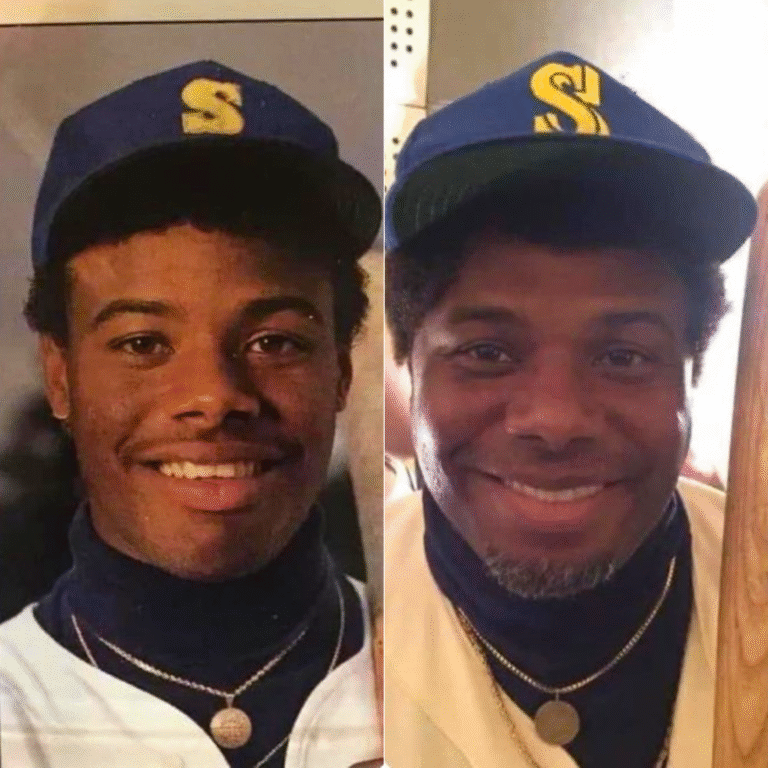
If you asked a room full of collectors to name the most iconic baseball card of the modern era, you’d likely hear the 1989 Upper Deck Ken Griffey Jr. rookie mentioned a lot.
It’s not just a card—it’s a piece of pop culture history and a cultural timestamp, a symbol of when baseball cards went glossy, high-end, and full of promise.
It sat at the top of Upper Deck’s first-ever checklist and became the face of an entire generation of collecting.
Here are some facts about ‘the Kid’s’ timeless rookie card that you might not know.
8 Surprising Facts About The Griffey Jr. Rookie
1. That Mariners Uniform? Airbrushed On
By now, most of us have seen the image on the card of Griffey standing with bat over shoulder, in the Seattle Mariners hat and uniform, but the original image was actually him rocking his San Bernardino Spirit threads.
Upper Deck had to airbrush the Mariners uniform onto Griffey—they couldn’t use minor league photos, and none existed of him in a Mariners uniform yet.
The polaroid that was used as the basis for the card sold for $13,887.60 in 2018.

2. Griffey’s Inclusion at #1 Was a Risky Bet
In 1989, Griffey Jr. hadn’t seen a pitch in the majors. He was fresh out of Double-A, and there were no guarantees he’d break camp with the Mariners.
Putting him in as #1 on the checklist of their debut baseball set was a big gamble by Upper Deck.
While today it feels obvious he was the choice as the top rookie, at the time it was far from it.
So who made the call? Not some MLB exec or marketing suit—it was a college student named Tom Geideman, a prospecting fanatic with a thing for Seattle’s No. 1 overall pick. Geideman’s insight gave Upper Deck the confidence to go bold.
3. A Card So Popular, It Got Its Own Print Run
Griffey’s rookie sat in the top-left corner of the print sheet, and that meant a lot of dinged corners.
Upper Deck had a policy of replacing damaged cards to keep collectors happy.
The Griffey card was in high demand, but with all the damaged copies, UD decided to run full sheets, just of Griffey. Yep, 100 copies per sheet. Just him.

4. The First Sports Card To Be Graded 100,000 Times By PSA
It’s only natural to expect a card that’s so popular to have huge demand for grading, especially when you also consider the abundance of supply.
Back in 2010, the card had already been inspected over 50,000 separate times by PSA. Fast forward to today, and it’s shattered the six-figure barrier—it was the first sports card ever to achieve that.
And yet, despite the sheer volume, demand for it hasn’t died. That’s what makes it special. Most mass-produced cards fade into the background. This one became a legend.
5. Ken Griffey Jr. Recreated The Image Decades Later
One of the coolest full-circle moments in hobby history came when Ken Griffey Jr. himself paid tribute to the card that made him a cardboard icon.
33 years after the 1989 Upper Deck rookie became legend, he recreated the famous image that we know so well.

6. It’s the Most Commonly Graded Card Of All Time
According to GemRate’s data, no card has ever been graded more separate times by PSA than the ‘89 UD Griffey.
Add in thousands more from SGC, CGC, and BGS, among others, and you’re looking at a cardboard icon that’s been scrutinized under a loupe more than any other.
7. Copies In Top Condition Aren’t As Common As You’d Think
Given that the card was released during the Junk Wax Era, it’s no surprise that the overall supply of Griffey Jr. rookie cards is off the scale, but despite that gem graded copies aren’t as common as you’d expect.
The card has been graded well over 100,000 times, but less than 5% have achieved the highest grade.
It’s a big reason why the top graded copies carry a big premium.
It was the first card of the set, and located in the top-left corner of printing sheets, so dinged corners and centering issues are not unusual.
8. It Was The First Card Of Upper Deck’s Secret Multi-Year Baseball Diamond Design
Something most collectors missed—Upper Deck’s first three flagship baseball sets were part of a hidden theme.
This one isn’t unique to the Griffey card alone, but given it’s the first card of the first set, it makes the list.
1989: A vertical stripe down the right—like a runner going from home to first.
1990: Stripe at the top—rounding to second.
1991: Left side—third base.
A slow jog around the diamond hidden in plain sight.

It’s hard to overstate the impact this one card had on collecting.
It wasn’t just about the player—it was about the moment. A changing of the guard. A new company. A fresh face. And a rookie card that still stops you in your tracks.
It’s not just Griffey Jr.’s best and most iconic card, but one of the most beloved sports cards of all time.
Got a Griffey story of your own? Drop it in the comments—we love hearing how collectors first crossed paths with The Kid.


2 Comments
It’s one card that will last forever, being the greatest card of all times, now and forever! I have had this card since it was printed and I will never sell it, never. It’s a card that has so much value (to me) and the only card I will Never sell no matter what the price will be. To me it just a beautiful card.
When the set was officially released, I was a 13 year old kid living in Ventura, California. I’d heard of it and seen it but couldn’t afford to buy the packs. My mom used to get me boxes of 1989 Topps and Donruss from Price Club (Costco) for $10.
One weekend, I went with my buddy to his dad’s house in Santa Barbara and his dad took us to a local card shop. There, in the display case was the 1989 Upper Deck Ken Griffey Jr. card for $2.50. I had $5 for the weekend. Check that, $2.50 after I bought it. I still have that same card. Will never get rid of it.
In 1990, I was lucky enough to go to a card show in Oxnard, California and The Kid and Sr. were signing autographs for $10-$20. They were both very gracious and kind. Wonderful choice as the face of baseball for years and the face of the first Upper Deck set. I had a great card collecting beginning. Thanks for the time.